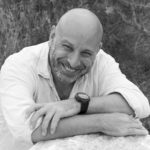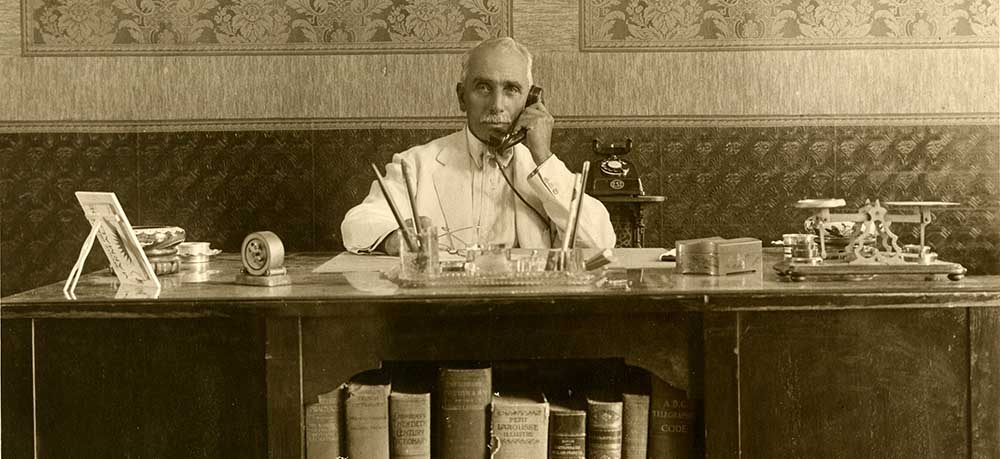 Michelle Woodward has been involved with photography for over 20 years as a photographer, writer, picture researcher, and photo editor. She received a Master of Science degree from the Massachusetts Institute of Technology in Comparative Media Studies. She is the photo editor of Middle East Report, published by MERIP, and editor of the Photography Page on the e-zine Jadaliyya. She has lived, worked, and traveled for many years in the Middle East and now resides in Beirut, Lebanon.
Michelle Woodward has been involved with photography for over 20 years as a photographer, writer, picture researcher, and photo editor. She received a Master of Science degree from the Massachusetts Institute of Technology in Comparative Media Studies. She is the photo editor of Middle East Report, published by MERIP, and editor of the Photography Page on the e-zine Jadaliyya. She has lived, worked, and traveled for many years in the Middle East and now resides in Beirut, Lebanon.
Among her publications are “After the Decisive Moment: Moving Beyond Photojournalism’s High Risk Mode,” in Film and Risk, edited by Mette Hjort (Wayne State University Press, 2012), “Creating Memory and History: The Role of Archival Practices in Lebanon and Palestine,” Photographies Volume 2, Issue 1, (March 2009), pp. 21-35, “Photographic Style and the Depiction of Israeli-Palestinian Conflict,” Jerusalem Quarterly Issue 31 (Summer 2007), and “Between Orientalist Clichés and Images of Modernization: Photographic Practice in the Late Ottoman Era,” History of Photography Vol. 27, No. 4 (Winter 2003).
 Patrick Godeau is a French photographer with three decades of experience in the Middle East, Europe, and West Africa. His work has focused on documenting monument restoration and conservation, architecture, and art. He also has a repertoire of nature photography, including flora and fauna and desert landscapes, as well as industrial and humanitarian photography. Godeau’s work has been published in museum catalogs, art books, and travel guides.
Patrick Godeau is a French photographer with three decades of experience in the Middle East, Europe, and West Africa. His work has focused on documenting monument restoration and conservation, architecture, and art. He also has a repertoire of nature photography, including flora and fauna and desert landscapes, as well as industrial and humanitarian photography. Godeau’s work has been published in museum catalogs, art books, and travel guides.
Throughout his career, Godeau has been based in Egypt, Syria, Italy, Senegal, and France. He currently lives in Cairo, where he is documenting monument conservation and specializing in landscape panoramics. While living in the Middle East, Godeau has amassed a collection of early twentieth century landscape photographs and portraits from Egypt and Syria.
 Omar Foda is a historian of the modern Middle East. His work tells the stories of things that appear inconsequential, frivolous, or foreign to provide a unique view on the region. He has published work in Arab Media and Society, the International Journal of Middle East Studies, Social Sciences and Missions and in several volumes including, The Birth of the Arab Citizen and the Changing of the Middle East.
Omar Foda is a historian of the modern Middle East. His work tells the stories of things that appear inconsequential, frivolous, or foreign to provide a unique view on the region. He has published work in Arab Media and Society, the International Journal of Middle East Studies, Social Sciences and Missions and in several volumes including, The Birth of the Arab Citizen and the Changing of the Middle East.
He is currently working on his monograph Grand Plans in Glass Bottles: Making, Drinking, and Selling Beer in a Changing Egypt 1880-Present. It argues that the history of Egypt’s beer, Stella, provides a new way to understand the radical changes that have happened to the country in the last century and a half.
He received his PhD from the Department of Near Eastern Languages and Civilizations at the University of Pennsylvania and has taught at Bryn Mawr College and the University of Pennsylvania.
 Josef Polleross is an Austrian photographer with extensive experience in photojournalism and art photography. Polleross has worked in various parts of the world including his native Austria as well as the United States, Egypt, and Thailand. In the 1980s, he moved to New York, where he collaborated with the photo agency JB Pictures, launching his career as a photojournalist. His photos documenting political events and social trends were published in prestigious newspapers such as the New York Times and Washington Post, and in magazines including Life, Newsweek, Time, Geo, Stern and Spiegel.
Josef Polleross is an Austrian photographer with extensive experience in photojournalism and art photography. Polleross has worked in various parts of the world including his native Austria as well as the United States, Egypt, and Thailand. In the 1980s, he moved to New York, where he collaborated with the photo agency JB Pictures, launching his career as a photojournalist. His photos documenting political events and social trends were published in prestigious newspapers such as the New York Times and Washington Post, and in magazines including Life, Newsweek, Time, Geo, Stern and Spiegel.
Polleross is currently focused on art photography, namely the classic format of the triptych. His images have been showcased in numerous exhibitions in Austria, Croatia, Turkey, Iran, Egypt, and the United States. Polleros has also published several books under the following titles: Thailand Triptychs (2015), Coming and Going, Jewish Life in Transit (2015), Jewish Life in Vienna (2012), Triptychs (2010), and Bangkok Panorama (2009).
 Barry Iverson was a photographer for Time Magazine for 25 years covering the Middle East from 1981-2007. He photographed major events including the assassination of Egyptian President Anwar Sadat, the post-9/11 takedown of the Taliban in Afghanistan, coup d’états, archaeology, and famine.
Barry Iverson was a photographer for Time Magazine for 25 years covering the Middle East from 1981-2007. He photographed major events including the assassination of Egyptian President Anwar Sadat, the post-9/11 takedown of the Taliban in Afghanistan, coup d’états, archaeology, and famine.
Iverson is a graduate of the University of Colorado at Boulder. In 1985, he won a Fulbright Scholarship to research the history of photography in Egypt, and concurrently taught photography at the American University in Cairo. He has produced several fine art portfolios including The Tour, Still, Egyptian Desert Views I & II, Cairo I & II, Antiquity, Egyptian Portraits, Comparative Views of Egypt, Aged, The Cinders of Gawhara Palace, Sand & Stone, and Comparative Views of Harvard. Iverson has published Comparative Views of Egypt (1994), and Egypt 1900: The View Through Postcards (1993). He has also authored the biographies of photographers Van Leo, whose archives Iverson was largely responsible for transferring to AUC, and Riad Chehata, and written about the Leavitt Hunt and Nathan Baker photographic partnership.
Iverson holds a large archive of 19th and 20th century photographs of the Near East. It was the early works and study of photographers like Frith, Greene, Du Camp, Hunt and Baker, and Walker Evans, which deeply affected Iverson’s own personal vision and style. http://www.barryiverson.com/
 Michael Karam is a British/Lebanese journalist, wine writer and documentary maker. His wine writing has appeared in Decanter, Harpers Wine Weekly, Monocle and The Spectator, while he has written on Lebanese affairs for The Spectator, The Times and Esquire. He is a contributor to Jancis Robinson’s Oxford Companion to Wine; The World Atlas of Wine and Hugh Johnson’s Pocket Wine Book. He wrote the Lebanon chapter for the award winning Wine Report between 2003 and 2009.
Michael Karam is a British/Lebanese journalist, wine writer and documentary maker. His wine writing has appeared in Decanter, Harpers Wine Weekly, Monocle and The Spectator, while he has written on Lebanese affairs for The Spectator, The Times and Esquire. He is a contributor to Jancis Robinson’s Oxford Companion to Wine; The World Atlas of Wine and Hugh Johnson’s Pocket Wine Book. He wrote the Lebanon chapter for the award winning Wine Report between 2003 and 2009.
He is the author of Wines of Lebanon, which won the Gourmand Award for the Best New World Wine Book, 2005; Arak and Mezze: The Taste of Lebanon, which was shortlisted for the Gourmand award for Best Food and Travel Book 2007, and Château Ksara: 150 years of wine making 1957-2007 and A History of Winemaking in the Arab World, which will be publish at the end of 2018.
 Dr. Akram Khater is University Faculty Scholar, Professor of History, and holds the Khayrallah Chair in Diaspora Studies at North Carolina State University where he also serves as the Director of the Khayrallah Center for Lebanese Diaspora Studies.
Dr. Akram Khater is University Faculty Scholar, Professor of History, and holds the Khayrallah Chair in Diaspora Studies at North Carolina State University where he also serves as the Director of the Khayrallah Center for Lebanese Diaspora Studies.
A native of Lebanon (born 1960), he holds a Ph.D. degree in History from the University of California, Santa Cruz, and University of California, Berkeley, respectively. His books include Inventing Home: Emigration, Gender and the Making of a Lebanese Middle Class, 1861-1921, and A History of the Middle East: A Sourcebook for the History of the Middle East and North Africa, and Embracing the Divine: Passion and Politics in the Christian Middle East. He has produced multiple documentaries on Arab American history, including the award-winning film titled The Romey Lynchings, that narrates the history of racial violence against early Arab immigrants, and The People’s Doctor: Herbert Nassour, the story of the struggle against a racialized and unequal medical system in the US. In addition, he is the senior curator for Turath: An Exhibit of Early Arab American Culture, and Arab American Labor Most recently, he has received a $500,000 grant from the National Endowment for the Humanities (USA) to develop Arabic handwriting text recognition.
He is past editor of the International Journal of Middle East Studies, and current editor of Mashriq&Mahjar: Journal of Middle East and North African Migrations, and sits on the editorial board of a book series on immigration studies.
